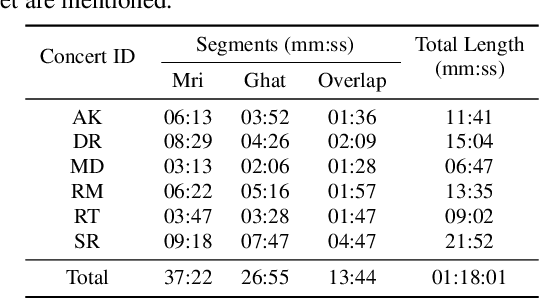Front-end Diarization for Percussion Separation in Taniavartanam of Carnatic Music Concerts
Paper and Code
Mar 04, 2021



Instrument separation in an ensemble is a challenging task. In this work, we address the problem of separating the percussive voices in the taniavartanam segments of Carnatic music. In taniavartanam, a number of percussive instruments play together or in tandem. Separation of instruments in regions where only one percussion is present leads to interference and artifacts at the output, as source separation algorithms assume the presence of multiple percussive voices throughout the audio segment. We prevent this by first subjecting the taniavartanam to diarization. This process results in homogeneous clusters consisting of segments of either a single voice or multiple voices. A cluster of segments with multiple voices is identified using the Gaussian mixture model (GMM), which is then subjected to source separation. A deep recurrent neural network (DRNN) based approach is used to separate the multiple instrument segments. The effectiveness of the proposed system is evaluated on a standard Carnatic music dataset. The proposed approach provides close-to-oracle performance for non-overlapping segments and a significant improvement over traditional separation schemes.
 Add to Chrome
Add to Chrome Add to Firefox
Add to Firefox Add to Edge
Add to Edge